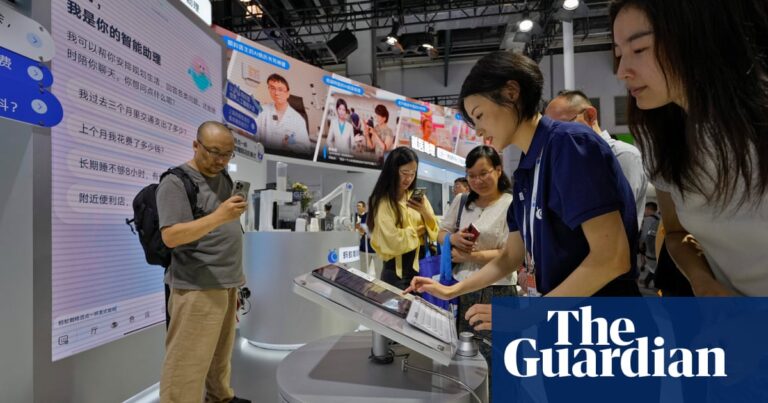At the World AI Conference held in Shanghai last week, SenseTime, one of China’s leading artificial intelligence companies, unveiled its latest model, the SenseNova 5.5.
The model demonstrated the ability to identify and describe a stuffed puppy (wearing a SenseTime cap), provide feedback on a drawing of a rabbit, and instantly read and summarize a page of text. SenseTime says SenseNova 5.5 rivals GPT-4o, the flagship artificial intelligence model from Microsoft-backed US company OpenAI.
If that wasn’t enough to attract users, SenseTime is also giving away 50 million tokens, digital credits for AI usage, for free, and says it will have staff on hand to help new customers migrate from OpenAI’s services to SenseTime’s products for free.
China’s attempt to poach domestic developers from OpenAI, the supposed market leader in generative AI, has become much easier after the company notified Chinese users that it will block the use of its tools and services from July 9.
“We are taking additional steps to block API traffic from regions that do not support access to OpenAI’s services,” an OpenAI spokesperson told Bloomberg last month.
OpenAI has not provided any details about the reasons for the sudden decision. ChatGPT is already blocked by the Chinese government’s firewall, but until this week developers could use virtual private networks to access OpenAI’s tools to fine-tune their own generative AI applications or benchmark their own research. Now the blockage comes from the US side.
Amid rising tensions between Washington and Beijing, the United States has restricted exports to China of certain advanced semiconductors that are essential for training cutting-edge AI technologies, putting pressure on other parts of the AI industry.
Xiaofu Zhu, founder of the Shanghai-based Safe AGI Center, which promotes AI safety, said OpenAI’s move has “raised great concerns within China’s AI community,” and in particular “the decision raises questions about fair access to AI technology globally.”
But it’s also an opportunity for domestic AI companies such as SenseTime, which are rushing to absorb users rejected by OpenAI. After warnings about OpenAI’s decision circulated last month, Baidu offered 50 million free tokens for its Ernie 3.5 AI model as well as free migration services, while another domestic company, Zhipu AI, offered 150 million free tokens for its models. Tencent Cloud is offering 100 million free tokens for its AI models to new users until the end of July. “Competitors see this as an opportunity to expand their user base and are offering migration paths for former OpenAI users,” Zhu said.
As a result of OpenAI’s decision, the development of Chinese AI companies may accelerate. These companies are in fierce competition with their US rivals and among themselves. China is estimated to have at least 130 large language models, accounting for 40% of the global total, second only to the US. But while US companies such as OpenAI are at the forefront of generative AI, Chinese companies are caught in a price war that some analysts speculate could hurt their profit margins and their ability to innovate. Still, Winston Ma, a professor at New York University who writes about Chinese technology, said OpenAI’s departure from China comes “at a time when China’s big tech companies are closing the performance gap with OpenAI and are essentially offering these Chinese LLM models for free.”
After newsletter promotion
“OpenAI’s withdrawal is a short-term shock to the Chinese market, but in the long term it may be an opportunity for the domestic LLM model to receive a real test,” Ma said, adding that until now Chinese companies have focused on commercializing large-scale language models rather than on advancing the models themselves.
Chinese commentators have downplayed the impact of OpenAI’s decision. State media Global Times reported it was “pressure from the U.S. to thwart China’s technological development.” Pan Helin, a digital economy researcher at Zhejiang University who sits on the government’s technology committee, called the move “good for the independence and self-reliance of China’s large-scale model,” according to Chinese media.
But there are signs that U.S. restrictions on China’s AI industry are starting to work. Online video giant Kuaishou recently had to limit the number of people who could access “Kling,” a new AI model that generates video from text, due to a lack of computing power caused by the chip shortage, The Information reported. And a hidden market for U.S.-made semiconductors is now booming as companies find ways to get around the sanctions. Blocking access to U.S. software may spur similar creativity.

